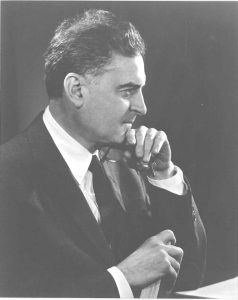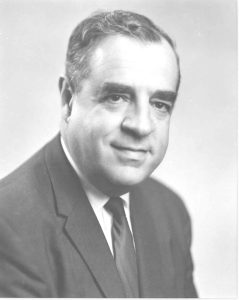Welcome to The University of Hawaiʻi at Mānoa
Thompson School of Social Work & Public Health
Welcome and thank you for your interest in the Thompson School of Social Work & Public Health.
If you want to learn more about the Thompson School of Social Work & Public Health history, continue below, or click on the other links below to learn other aspects of the school.
Department of Public Health Sciences
Thompson School of Social Work & Public Health
School Background/History
The University of Hawaiʻi began offering a social work training program to students on the undergraduate and graduate levels in September 1936. The courses were designed primarily to train employees of local social work agencies who were college graduates but lacked professional preparation. An integrated one-year program of professional graduate-level study, set up in 1940, served as the basis for the establishment of a School of Social Work. In 1942, the school was provisionally accredited by the American Association of Schools of Social Work. The School of Social Work was fully accredited in January 1948 as a one-year school, awarding a Certificate of Social Work.
A two-year graduate program leading to the master of social work (MSW) degree was approved by the Board of Regents in November 1948, and the school was fully accredited as a two-year Graduate School of Social Work by the American Association of Schools of Social Work in January 1950. In 1950, there were approximately 30 students. The school has since grown to an average enrollment of 300 students in the undergraduate and graduate programs.
The undergraduate program, leading to the degree of bachelor of social work (BSW), was approved by the Board of Regents in October 1976. The BSW program was initiated in January 1977.
In February 1991, the Board of Regents approved the provisional status of the PhD Program in Social Welfare. The program began in 1991. In May 2003, the BOR approved the permanent status of the PhD Program.
In September, 2008, the Board of Regents approved the naming of the School after Myron B. Thompson, a School of Social Work alumnus who went on to become a notable leader in the community.
In July 2016, the Myron B. Thompson School of Social Work was reorganized and is currently home to the Department of Social Work, the Department of Public Health Sciences and the Center on Aging.
In December 2020, the school was renamed to the Thompson School of Social Work & Public Health.
In 2016, the Myron B. Thompson School of Social Work celebrated it’s 80th Anniversary. A compendium was published to celebrate the milestone in the School’s history. Click here to view the compendium.
Thompson School of Social Work & Public Health
Re-Organization
Thompson School of Social Work & Public Health
On Friday, September 19, 2008, the Board of Regents unanimously approved the naming of the School The Myron B. Thompson School of Social Work. Myron “Pinky” Thompson received his MSW from UH in 1953. He went on to become a noted humanitarian and leader in the struggle for the preservation of the Hawaiian culture. In December of 2020, the school was renamed to the Thompson School of Social Work & Public Health.
Thompson has been described as wise, compassionate, a lover of music, full of life and laughter, a warrior against social injustice, and never satisfied with the status quo or the status of Native Hawaiians. He passed away on Christmas Day in 2001.
To read more about Myron “Pinky” Thompson, click on this link.
Gartley Hall History
ALONZO GARTLEY (1869-1921), for whom Gartley Hall is named, was a Honolulu businessman and the chairman of the first Board of Regents of the University of Hawaiʻi. Gartley was a graduate of the US Naval Academy, and came to Hawaiʻi as a naval officer several times in the last decade of the nineteenth century. He settled permanently in Hawaiʻi in 1900 and became manager of Hawaiian Electric Company. From 1910 until his death he was manager of his father-in-law’s company C. Brewer. His innovations in milling machinery for C. Brewer made him famous in cane sugar circles. He founded the Hawaiian Engineering Association and was its first president. Gartley was a man of many interests. He developed the Agnes Galt hibiscus, a widely grown hybrid in Southern California.
He was an especially talented photographer and his views of Hawaiian landscapes, native Hawaiians, and panoramic scenes have become classic images of a bygone Hawaiʻi. Art historian Lew Andrews characterized his photographs as some of the most appealing and beautiful ever taken in Hawaiʻi. A number of Gartley’s photographs were used in tourist promotion campaigns to illustrate the scenic wonders of Hawaiʻi.
Gartley Hall was built in 1921 and was one of the buildings in the “Old Quadrangle”, which also included Hawaiʻi Hall, Crawford Hall, and George Hall. On May 7, 2012, a ground blessing ceremony was held for the renovation of Gartley Hall. In June 2014, the Myron B. Thompson School of Social Work moved into Gartley Hall from it’s previous space in Henke Hall.
Information from http://libweb.hawaii.edu/names/gartley.html and http://manoa.hawaii.edu/news/article.php?aId=5087.
Henke Hall History
The School of Social Work was housed in Hawaiʻi Hall for many years before it moved to Henke Hall while Hawaiʻi Hall was being renovated. In 2014, The Myron B. Thompson School of Social Work moved from Henke Hall to the newly renovated Gartley Hall. Below is a brief history of Henke Hall.
LOUIS ALBERT HENKE (1889-1985 ), for whom Henke Hall is named, was a UH professor of animal husbandry from 1916-1954 and the author of many bulletins and circulars in that field. Henke received a B.S. and a M.S. from the University of Wisconsin before his appointment to UH. His appointment signaled a new commitment on the part of the university (then college) to serious research in agriculture.
He liked to recall the days when everything on campus east of Varney Circle used to be his experimental farm. His experiments with sugar cane waste and pineapple waste led the development of low cost feeds for island livestock, thus reducing the need for imported feeds (although in later years concerns for residual pesticides ended that program). He was assistant director and then director of the Experiment Station from 1937 until his retirement. Henke remained active on campus well into his nineties.
Past Deans of the Thompson School of Social Work & Public Health
School of Social Work Deans

Dean Noreen Mokuau
2010-2020

Dean Jon Matsuoka
2000-2010

Dean Pat Ewalt
1987-2000

Dean Daniel Sanders
1975-1986

Dean Herbert Aptekar
1969-1974

Dean Katharine Handley
1946-1967

Dean Fred Delliquadri
1967-1969
